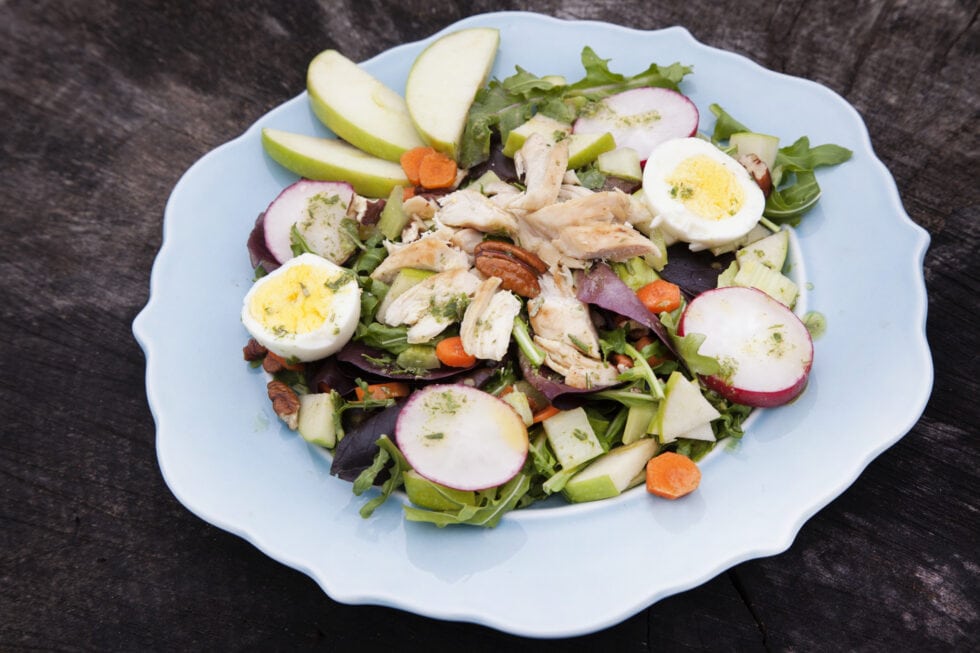
Rosemary Chicken Low Histamine Salad Recipe (Low Oxalate and Low Lectin)
Looking for ways to get some variety in your low histamine salad recipes?
Salads are a big part of my weekly low histamine meal plans. They are so easy to make. And they are a great way to get mast cell supporting nutrients into your diet.
Did you know that a lot of leafy greens are good sources of quercetin? Quercetin has been shown to help stabilize the mast cells.
But I know you want to eat meals that are both healthy and exciting. I do, too!
Because I eat salads so much, I’m always thinking about how I can make them feel like something new.
Salads can go way beyond basic iceberg lettuce with a few carrot shavings and a cucumber slice.
In fact, a good salad can have a lot of flavors, even using only low histamine foods.
This Rosemary Chicken Salad I’m going to share with you can be served as a filling meal or hearty side dish.
And with a lot of protein, it will keep you satisfied.
Keep reading to learn more about this tasty low histamine salad recipe with bright flavors.
This Rosemary Chicken Salad Recipe is:
- Low histamine
- Low oxalate to medium oxalate
- Low lectin
- Low FODMAP option
- Dairy free
- Gluten free
Making a Low Histamine Salad
I see recipes more as guidelines than rules.
So, feel free to get creative and experiment with your own lower histamine ingredients!
For example, you might want to add blueberries instead of green apples.
Or you might want to use pistachios rather than pecans. (Note: pistachios are higher oxalate at servings over ¼ cup.)
You could try replacing the rosemary and oregano with cilantro.
Or low histamine pork roast might be a great addition instead of chicken.
I’ve chosen the ingredients in this low histamine salad recipe because they are all low histamine and low lectin. Most are also low oxalate and low FODMAP.
I’ll let you know which ones to leave out if you are concerned about FODMAPs and oxalates.
But like I said, this is just to get you started. Have fun and let me know what you try!
Related Article: Low Histamine Food List
Here’s a breakdown of the key ingredients in this recipe and why I picked them.
Leafy Greens
Many salads start with a leafy green vegetable.
Leafy greens are a good way to get nutrients into your diet.
Each type of leafy green will vary in nutritional content. But you might expect to find these common nutrients in many of them:
- Quercetin – has mast cell stabilizing and anti-inflammatory properties
- Vitamin C – has mast cell stabilizing and antihistamine properties
- Magnesium – supports mast cells
- Fiber – can help lower the risks of some digestive conditions
- Vitamin B6 – supports DAO (diamine oxidase) levels for histamine support
- Iron – a lack of iron has been shown to be a mast cell trigger
I mix up the lettuces I use. But I almost always keep the arugula. I just love the pepperiness it adds to the salad.
For your lettuce, you can use any low histamine lettuce like:
- Green leaf
- Red leaf
- Romaine
- Butter
- Iceberg
Avoid spinach. Spinach is a high histamine food. It’s also high oxalate.
Fresh Herbs
I love using fresh herbs in my cooking as much as possible. This is because fresh herbs are very high in mast cell stabilizing antioxidants.
You can chop up herbs and mix them right in with your lettuce. I find that leafy green herbs are best for this. You can experiment with herbs like:
- Cilantro
- Basil
- Mint
In this low histamine salad recipe, I’m just using herbs in the dressing, though.
I’ve used rosemary and oregano. Both have robust, earthy flavors that pair nicely with the vegetables and chicken.
Rosemary has:
- Anti-inflammatory and antioxidant properties
- Magnesium – supports mast cells
- Calcium – supports healthy bones and teeth, can help regulate histamine release
Oregano has:
- Antimicrobial, antioxidant, and anti-inflammatory properties
- Fiber – can help lower the risks of some digestive conditions
- Magnesium – supports mast cells
You can usually find these herbs in your grocery store. But they can be easy to grow in your garden, too.
I look forward to summer each year because it means I’ll have a lot of fresh herbs right in my own yard.
TIP: Use fresh herbs when you can. They have higher nutritional value and are lower histamine than dried.
Radishes
Radishes are a cruciferous vegetable.
Other cruciferous veggies include:
- Arugula
- Broccoli
- Cauliflower
- Kale
- Cabbage
- And more
Cruciferous veggies are super nutritious. They are high in sulfur.
Did you know that sulfur, amazingly, helps stabilize mast cells?
The sulfur makes a compound called heparin sulfate. This compound is what mast cells use to keep themselves from over-releasing inflammatory chemicals.
So, sulfur is really important for those of us with Mast Cell Activation Syndrome!
There are many types of radishes. Some can be a little spicy and peppery. I like this about them, but you may have different tastes.
If you prefer a milder radish, check out watermelon radishes as one option.
Whatever type you choose, radishes make a nice addition to any salad both for flavor and crunch.
TIP: You can use another cruciferous veggie like cabbage or turnips in place of radishes, too. Cabbage and turnips are low histamine, low lectin, low oxalate, and low FODMAP.
Chicken
Chicken is a great source of protein.
Protein plays different important roles in your body such as:
- Repairing cells
- Making new cells
- Building muscles
Chicken is easy to make and affordable. It’s a staple for me.
I often roast a whole chicken, in a frozen state, in an Instant Pot like this, to keep it really low histamine.

That means I’ve usually got a lot of leftovers.
This low histamine salad recipe is perfect for your leftover chicken!
And, if you make a whole Instant Pot Chicken, you can also use your leftovers in these recipes:
- Warming Chicken Ginger Soup – Low Oxalate, Low Lectin, Low FODMAP
- Low Histamine Tacos – Low Oxalate, Low Lectin, Low FODMAP, Low Salicylate
- Spring Roll Stir Fry – Low Oxalate, Low Lectin, Low FODMAP, Low Salicylate
If you don’t have an Instant Pot, use this oven roast chicken recipe.
Freezing Leftovers
I generally recommend freezing all your leftovers immediately. It helps keep them low histamine.
But some people, who are further along in their health journey, are able to eat leftovers that have been refrigerated overnight.
Either way, adding this protein source to your salad becomes even easier if you’ve got leftovers.
To thaw your leftover chicken, you can place it in the fridge to thaw. Never thaw on your countertop at room temperature!
Try to time your thawing so that the chicken doesn’t sit in the fridge too long once it is thawed. A single breast takes about 12 hours to thaw in the fridge.
The thawing time can increase histamine levels. However, if you aren’t super sensitive, thawing in the fridge may be fine for you.
If you are still very sensitive, you can also thaw your leftovers in a microwave. If I use a microwave, I just start the microwave and leave the room to avoid the EMF exposure.
Learn more about choosing low histamine meats in this blog post.
Eggs – Omit If in Phase 1 of the Low Histamine Diet
Eggs are another great source of protein.
But they aren’t always tolerated. If you are still in phase 1 of the low histamine diet and you have a lot of sensitivities, you may want to hold off on adding the egg.
But if you do ok with eggs, you can get a bunch of vitamins from this superfood.
Eggs have a lot of nutrients, including omega 3s and Vitamin D, which:
- Omega 3s
- Support heart and brain health
- Have anti-inflammatory properties
- Vitamin D
- Stabilizes mast cells
- Regulates the immune system
- Has anti-inflammatory properties
Choose pasture raised eggs when possible. One study showed that pasture raised eggs have at least double the amount of omega 3 fatty acids!
TIP: Eggs can sit at the grocery store for a long time. Fresher eggs from a local farm will be lower histamine and taste better, too!
Carrots – Omit for Low Oxalate Option
I buy purple carrots every chance I get.
Purple carrots are the most nutritious variety of carrots.
They are rich in antioxidants. Antioxidants can help fight inflammation – good news if you have Mast Cell Activation Syndrome (MCAS) or Histamine Intolerance.
That’s because with either of those conditions, you’re likely to have inflammation.
But if purple carrots aren’t available, you can use orange carrots.
I buy organic carrots with the tops still attached. In my experience, these tend to be fresher and more flavorful.
Carrots can last a long time. So, if you buy them without the tops, you don’t really know how long they’ve been sitting in the store.
But buying with the greens still on you’ll know your carrots are fresher, so lower histamine.
Carrots can add a nice crunch to your salad. The bright colors of carrots also make your salad dynamic on the plate.
It’s said that we eat with our eyes first!
But here’s what to know about carrots if you have Oxalate Intolerance.
You can make this recipe low oxalate by leaving out the carrots. Or you can make it medium oxalate by boiling the carrots and discarding the cooking water.
Boiled carrots are medium oxalate at about ½ cup.
Boiled carrots won’t give you the crunch. But you’ll still get some added flavor and nutrients.
TIP: Try adding red cabbage for crunch and color if you have Oxalate Intolerance.
Pecans – Omit for Low Oxalate Option
Nuts are a good source of plant-based protein.
Pecans are also a source of nutrients like:
- Fiber – can help lower the risks of some digestive conditions
- Magnesium – supports mast cells
- Calcium – supports healthy bones and teeth, can help regulate histamine release
- Iron – a lack of iron has been shown to be a mast cell trigger
- Zinc – supports immune function, may regulate mast cell activation
TIP: Choose pesticide free nuts to decrease your toxic load.
I like these pecans.

Celery – Omit with FODMAP Intolerance
Celery is high fodmap if more than half a rib. To keep it low, stick with about ¼ rib.
The rib is the technical name for one “stick” of celery. Some people will say one stalk of celery. But really, the whole bundle of celery is the stalk.
The rib is one piece.
That’s important to know because when it comes to FODMAP Intolerance, you aren’t just looking at the food itself. You also are considering the amount.
TIP: The leaves from the celery hearts are edible. You can add them to any recipe the same way you would leafy herbs.
Green Apples – Omit with FODMAP Intolerance
Green apples have a lower glycemic index (affect blood sugar less) than sweeter apples.
That means they won’t affect histamine levels as much.
Apple skins have a lot of mast cell stabilizing quercetin. So, I keep the skins on.
I really like the tartness and crunch green apples add to this salad.
I also use apples in my Waldorf Salad Recipe (Low Lectin, Medium Oxalate, and with Low Salicylate Options!)
TIP: Buy organic apples. Conventional apples can be high in pesticide residue. And many pesticides are mast cell triggers.
Make sure you’ve downloaded my FREE report on the top 7 mast cell triggers here.
Dressing
A lot of store-bought dressings have high histamine ingredients and mast cell triggering preservatives.
But it’s so easy to make your own low histamine salad dressing at home.
The simple ratio for a vinaigrette style of dressing is 3 parts oil to 1 part vinegar.
Here, I’ve used Kasandrino’s Olive Oil as a healthy fat.
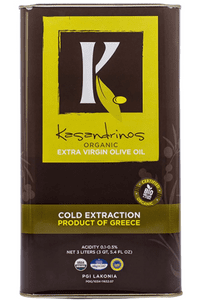
Related Post: Olive Oil – Avoiding the Frauds and Finding the Truth
And I’ve suggested either Bragg’s vinegar or lemon juice as the acid.
Now, you’re probably wondering why I’m suggesting vinegar which is listed as a high histamine food. Same with lemon juice.
First, I’ll let you know that you don’t absolutely need it for your rosemary dressing. But it can balance the dressing flavors a little more.
Some people who are further along with their health are able to tolerate a little bit of higher histamine foods. In fact, that’s really the end goal. To get more foods back into your diet.
You can learn all about phases of the low histamine diet plan in this post.
So, for those who aren’t super sensitive, a small amount of vinegar or lemon juice may be ok.
Even at my sickest, I was able to tolerate a squeeze of lemon juice in my water.
But you can just leave out the vinegar or lemon juice for now, too. The olive oil and herbs will still give you the burst of flavor that you want when adding dressing to your salad.
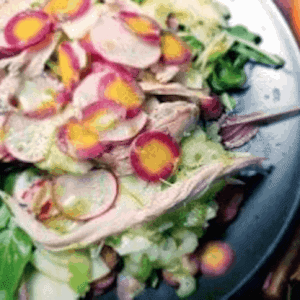
Rosemary Chicken Low Histamine Salad Recipe
Equipment
- Sharp Knife
- Small Pot with Lid
- Straining Spoon
- Handheld Juicer optional
Ingredients
Low Histamine Salad
- 3 ounces Low Histamine Chicken from frozen leftovers
- 1 Pasture Raised Egg
- 1½ cups Baby Lettuce
- 1½ cups Baby Arugula
- 2 Radishes
- 1 Purple Carrot omit for lower oxalate option, boil for medium oxalate option
- 1 rib Celery only use ½ stick per serving to keep it low FODMAP
- ½ Green Apple omit with FODMAP Intolerance
- 2 Tablespoons Pecans low oxalate at 1 Tablespoon per serving, chopped
Dressing
- ½ cup Kasandrino’s Olive Oil
- 2 sprigs Fresh Rosemary
- 2 Tablespoons Fresh Oregano
- 1 drop Stevia
- ⅛ teaspoon Redmond Real Salt
- 1 teaspoon Fresh Lemon Juice OR
- 1 teaspoon Bragg's Apple Cider Vinegar if tolerated, low oxalate at ½ teaspoon per serving
Instructions
Night Before
- Defrost leftover roasted chicken in the fridge. One breast can take about 12 hours.
Low Histamine Salad
- Start by making a hard-boiled egg. Put your raw egg in a small pot and cover with cold water.
- Bring water to a rolling boil.
- Remove pot from heat source and cover with a lid. Let egg sit for about 10 minutes in the hot water. (It will continue cooking in the hot water, even though the water is not on an active heat source.)
- While your egg cooks, cut up all the other ingredients for your salad (lettuce, arugula, radishes, carrot, celery, green apple, and pecans). Set aside.
- Remove egg from the hot water with a slotted spoon and place in a small bowl filled with ice to cool.
- Make the dressing by adding all the dressing ingredients to a small blender (olive oil, rosemary, oregano, stevia, salt, lemon juice or vinegar if tolerated). Blend to combine.
- Layer lettuce and arugula on plate. Add the chopped salad ingredients.
- Peel your hard-boiled egg.
- Slice egg and add it to the salad.
- Add thawed, previously cooked chicken.
- Top with salad dressing.
Notes
Nutrition
What are your favorite ways to mix a low histamine salad? Share in the comments below.
More Low Histamine Salad Ideas
- Ranch Dressing for Salad or Dip – Low Oxalate, Low Lectin, Low FODMAP options
- Mango Blueberry Basil Salad – Low Oxalate, Low Lectin
- Baru Nut Crusted Chicken Over Salad – Low FODMAP, Low Oxalate, Low Lectin
- Waldorf Salad – Medium Oxalate, Low Lectin, Low Salicylate options
Some links in this website are affiliate links, which means Mast Cell 360 may make a very small commission if you purchase through the link. It never costs you any more to purchase through the links, and we try to find the best deals we can. We only recommend products that we love and use personally or use in the Mast Cell 360 practice. Any commissions help support the newsletter, website, and ongoing research so Mast Cell 360 can continue to offer you free tips, recipes, and info. Thank you for your support!
References
Anogeianaki, A., et al. (2010). Vitamins and mast cells. International journal of immunopathology and pharmacology, 23(4), 991–996. https://doi.org/10.1177/039463201002300403
Chakravarty, N., & Yu, W. J. (1986). Regulatory role of calcium on histamine secretion. Agents and actions, 18(1-2), 57–60. https://doi.org/10.1007/BF01987982
FoodData Central. (2019). https://fdc.nal.usda.gov/fdc-app.html#/food-details/169387/nutrients
FoodData Central. (2019a). https://fdc.nal.usda.gov/fdc-app.html#/food-details/168431/nutrients
FoodData Central. (2019b). https://fdc.nal.usda.gov/fdc-app.html#/food-details/169247/nutrients
FoodData Central. (2019c). https://fdc.nal.usda.gov/fdc-app.html#/food-details/173473/nutrients
FoodData Central. (2019d). https://fdc.nal.usda.gov/fdc-app.html#/food-details/171328/nutrients
HappyForks. (n.d.-b). Recipe analyzer. Retrieved May 3, 2023, from https://happyforks.com/analyzer/result
Kakavas, S., Karayiannis, D., & Mastora, Z. (2021). The Complex Interplay between Immunonutrition, Mast Cells, and Histamine Signaling in COVID-19. Nutrients, 13(10), 3458. https://doi.org/10.3390/nu13103458
Ledowsky, C. (2022). DAO Deficiency and Histamine: The Unlikely Connection. MTHFR Support Australia. https://mthfrsupport.com.au/2016/09/dao-deficiency-and-histamine-the-unlikely-connection/
Leyva-López, N., Gutiérrez-Grijalva, E. P., Vazquez-Olivo, G., & Heredia, J. B. (2017). Essential Oils of Oregano: Biological Activity beyond Their Antimicrobial Properties. Molecules, 22(6), 989. https://doi.org/10.3390/molecules22060989
Li, Y., et al. (2016). Quercetin, Inflammation and Immunity. Nutrients, 8(3), 167. https://doi.org/10.3390/nu8030167
Liu, Z. Q., et al. (2017). Vitamin D contributes to mast cell stabilization. Allergy, 72(8), 1184–1192. https://doi.org/10.1111/all.13110
Milajerdi, A., et al. (2021). Association of Dietary Fiber, Fruit, and Vegetable Consumption with Risk of Inflammatory Bowel Disease: A Systematic Review and Meta-Analysis. Advances in Nutrition, 12(3), 735–743. https://doi.org/10.1093/advances/nmaa145
Mulhollem, J. (n.d.). Research shows eggs from pastured chickens may be more nutritious. Penn State University. https://www.psu.edu/news/agricultural-sciences/story/research-shows-eggs-pastured-chickens-may-be-more-nutritious/
Rahbardar, M. G., & Hosseinzadeh, H. (2020). Therapeutic effects of rosemary (Rosmarinus officinalis L.) and its active constituents on nervous system disorders. Iranian Journal of Basic Medical Sciences, 23(9), 1100–1112. https://doi.org/10.22038/ijbms.2020.45269.10541
Roth-Walter, F. (2021). Compensating functional iron deficiency in patients with allergies with targeted micronutrition. Allergo Journal International, 30(4), 130–134. https://doi.org/10.1007/s40629-021-00171-9
Shaik-Dasthagirisaheb, Y. B., et al. (2013). Role of vitamins D, E and C in immunity and inflammation. Journal of biological regulators and homeostatic agents, 27(2), 291–295.
Sighi. (n.d.). HIT > Introduction. Retrieved May 3, 2023, from https://www.histaminintoleranz.ch/en/introduction.html
Srebro, D., et al. (2023). The Interactions of Magnesium Sulfate and Cromoglycate in a Rat Model of Orofacial Pain; The Role of Magnesium on Mast Cell Degranulation in Neuroinflammation. International Journal of Molecular Sciences, 24(7), 6241. https://doi.org/10.3390/ijms24076241
Zhang, L., et al. (2021). Endogenous sulfur dioxide is a novel inhibitor of hypoxia-induced mast cell degranulation. Journal of Advanced Research, 29, 55–65. https://doi.org/10.1016/j.jare.2020.08.017
Weng, Z., et al. (2012). Quercetin is more effective than cromolyn in blocking human mast cell cytokine release and inhibits contact dermatitis and photosensitivity in humans. PloS one, 7(3), e33805. https://doi.org/10.1371/journal.pone.0033805


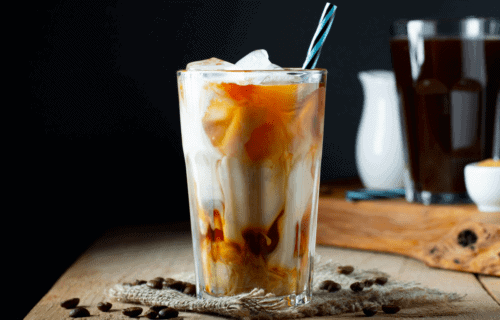
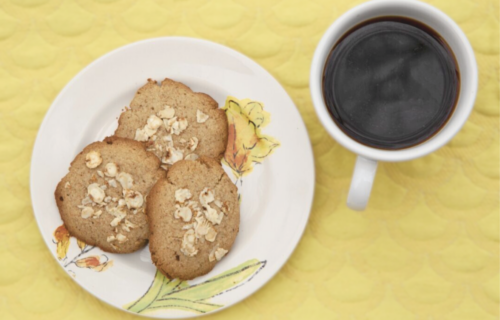
This salad is excellent–it has become a staple for me. I only make a couple of minor tweaks: 1) I leave out the apple because I react to them for some reason, and 2) instead of apple cider vinegar in the dressing, I use a mixture of water and ascorbic acid powder (aka powdered vitamin C). This is a trick I picked up on another low-histamine recipe site, and it is a life-saver if you are super sensitive and can’t tolerate even small amounts of vinegar, like me. I use a ratio between 1:12 and 1:6 ascorbic acid:water. I know the recipe above says you can just leave out the vinegar, but I really like having the bit of tartness that the ascorbic acid adds. I like this with the mix of lettuce and arugula that the recipe calls for, but it’s also great with just lettuce if that’s what you have.
Hi Laura,
Our family loves this salad, too! I’m glad you found an alternative that works for you on the vinegar. We are all such individuals. Many in our population don’t tolerate ascorbic acid well because it’s generally made from fermented corn. You can read about that here: https://mastcell360.com/low-histamine-sources-of-vitamin-c-to-know-about-if-you-have-mast-cell-activation-syndrome-or-histamine-intolerance/
It’s so great you are experimenting and sharing!
If apples bother you, you might also be interested in reading this post on salicylates. Not everybody has issues with them. But apples are high salicylate, and you can check other foods to see if that fits your experience: https://mastcell360.com/salicylates-and-salicylate-foods-what-to-know-when-you-have-mast-cell-activation-syndrome-or-histamine-intolerance/
Best,
Kam